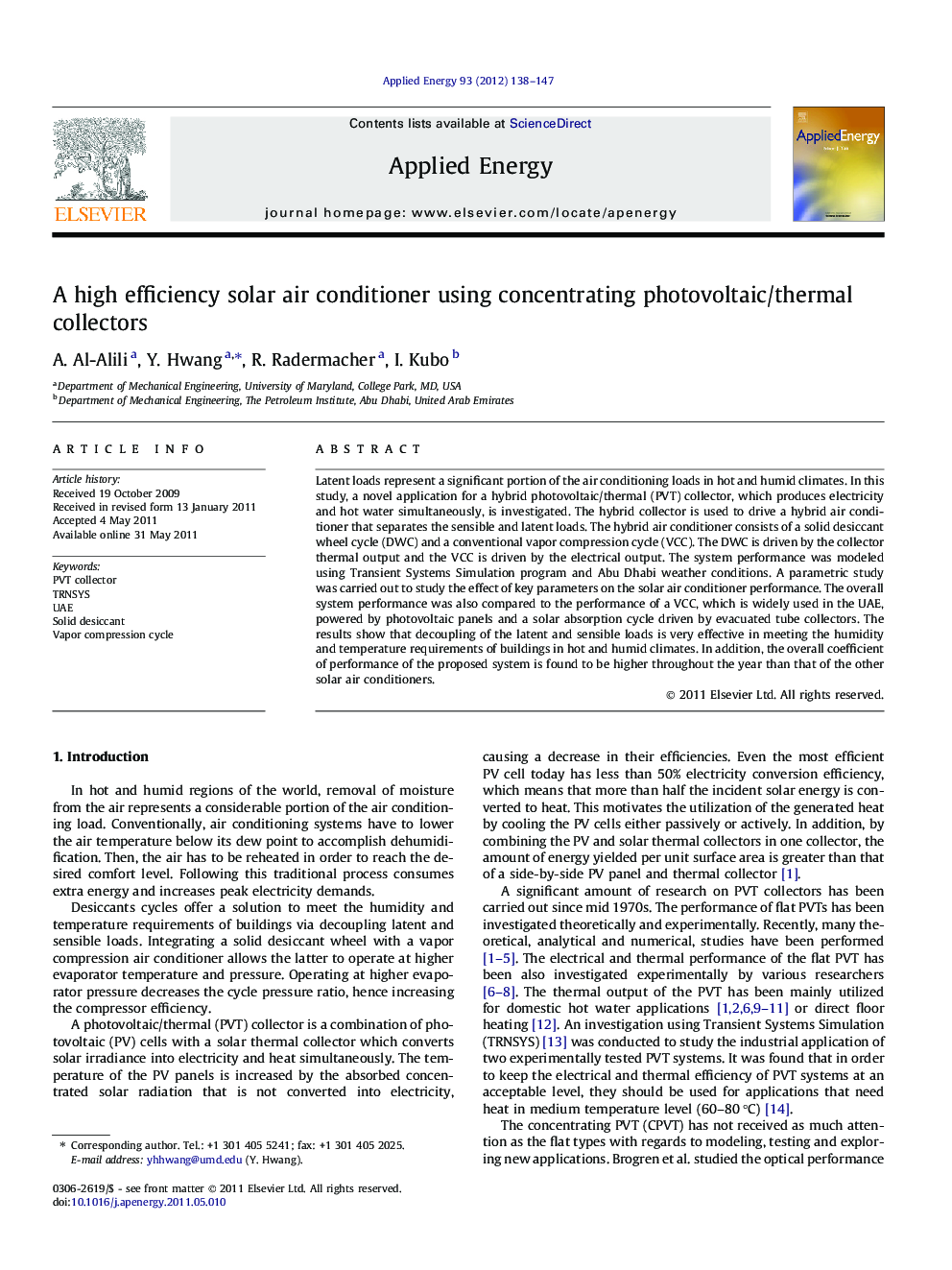| Article ID | Journal | Published Year | Pages | File Type |
|---|---|---|---|---|
| 243316 | Applied Energy | 2012 | 10 Pages |
Latent loads represent a significant portion of the air conditioning loads in hot and humid climates. In this study, a novel application for a hybrid photovoltaic/thermal (PVT) collector, which produces electricity and hot water simultaneously, is investigated. The hybrid collector is used to drive a hybrid air conditioner that separates the sensible and latent loads. The hybrid air conditioner consists of a solid desiccant wheel cycle (DWC) and a conventional vapor compression cycle (VCC). The DWC is driven by the collector thermal output and the VCC is driven by the electrical output. The system performance was modeled using Transient Systems Simulation program and Abu Dhabi weather conditions. A parametric study was carried out to study the effect of key parameters on the solar air conditioner performance. The overall system performance was also compared to the performance of a VCC, which is widely used in the UAE, powered by photovoltaic panels and a solar absorption cycle driven by evacuated tube collectors. The results show that decoupling of the latent and sensible loads is very effective in meeting the humidity and temperature requirements of buildings in hot and humid climates. In addition, the overall coefficient of performance of the proposed system is found to be higher throughout the year than that of the other solar air conditioners.
► In this study, a hybrid desiccant assisted air conditioner powered by a hybrid solar collector is proposed. ► A hybrid air conditioning system is modeled using TRNSYS simulation program. ► We find that the system is better than a standalone vapor compression cycle in ensuring thermal comfort. ► We also find that the new approach’s COP is about double that of the common solar air conditioners.
